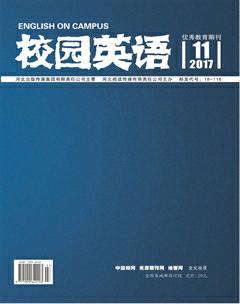Chinese Translation activities from Zhou Dynasty to Eastern Han Dynasty(before Emperor Huan)
赵晴
【Abstract】translation history is the important component part of translation studies. On the basis of reviewing two books A History of Translation Theory in China and A Brief History of Chinese Translation, this paper tries to study Chinese translation activities from Zhou dynasty to eastern Han dynasty, hoping to promote development of studies on translation history.
【Key words】translation activities; Zhou Dynasty; communication
1. Translation Activities in Zhou Dynasty
As is known to all, back in prehistoric times, tribes and ethnics from different regions of China began their communication and integration. And the interaction between Chinese nation and the distant foreign residents also began very early.
In the Zhou dynasty, there are inhabitants from different ethnic groups within the territory of the dynasty. With so many ethnic groups to associate, Hua ethnic group cannot do without translation. Xiangxu is a translator offcial, the specific task of Xiangxu is to receive envoys and visitors from other nations and countries, and Xiangxu is also responsible for translating matters. Officials who translate eastern national language are called Ji; officials who translate southern national language are called Xiang; officials who translate western national language are called Didi; officials who translate northern national language are called Yi.
Vassal states of Zhou Dynasty also have translating officials, called Xingren. The language of Jingman is different from central states, so there must be translators when they associate with central states.
States governed by Zhou Dynasty, such as Chu and Yue, use two different languages. The language of Yue is quite different from that of central plain state, while the language of Chu is similar to central plain states.
2. Translation Activities in Qin Dynasty
After the First Emperor of Qin unified China, he change the name of translating official from XingRen to DianKe, DianKe is in charge of the reception and communication of the minority people, and other matters, and also responsible for diplomatic relations and border tribal affairs. The western Han dynasty followed Qin, also has XingRen, but emperor Jing changed the it to “Da Xingling” in BC144, and then emperor Wu changed it to Da Honglu. Vassals, feudal lords, tribal leaders of minority groups, as well as foreign monarchs and envoys are all regarded as the emperors guests, Da Honglu is in charge of all the relevant affairs. When vassals have an audience with the emperor, Da Honglu is in charge of etiquette; when a vassal die, Da Honglu dispatch envoys to condole, draft a memorial speech and posthumous title. When tribal leaders of minority groups that belong to Han dynasty accept the title or have an audience with the emperor, as well as foreign envoys pay tribute to the emperor, affairs about etiquette are all undertook by Da Honglu. If counties subordinate officials to the capital to report the status of local governance, Da Honglu will arrange their accommodation.
3. Translation Activities in Han Dynasty
Throughout the Western Han Dynasty, the communication with Hun is really frequent. Except in BC 56, the communication with the Huns was in charged of Dian Shuguo, all the others affairs were handled by Da Xingling or Da Honglu and subordinate translating officials. The language of the Huns belongs to Altaic, quite different from Chinese language, therefore translating is of vital importance in the communication between the Huns and the Hans.
The foreign affairs of the Eastern Han Dynasty is roughly the same as that of the Western Han Dynasty, also has Da Honglu, subordinate officials include one Da Xinglin, …one prime minister (in ancient China), and 47 Zhi Lilang. In the meantime, the Eastern Han Dynasty also has KeCao who is responsible for communication affairs with other ethnic groups and foreigners, and divided KeCao into Nanzhu Kecao and Beizhu Kecao, but in late Eastern Han Dynasty, combine the two into KeCao again.
In the Eastern Han Dynasty, people have translated three poem, they not only record the poet and the translator, but also keep the Chinese character of the original poem. According to History of the Later Han Dynasty, the three poems are created in Yongping years (from BC 58 to BC 75), they were wrote by Tangzui, and later translated by Tiangong.
Conclusion
Translation activities from Zhou Dynasty to Eastern Han Dynasty as a beginning of Chinese translation activities, plays an important role in translation history. Every translation activity, whether it is big or small, had a great and profound influence on society and culture. Studies on translation activities of this period are quite necessary. Through the study of translation activities, we can get more information of translation history of China, if we are well versed in history, we can create the future better.

